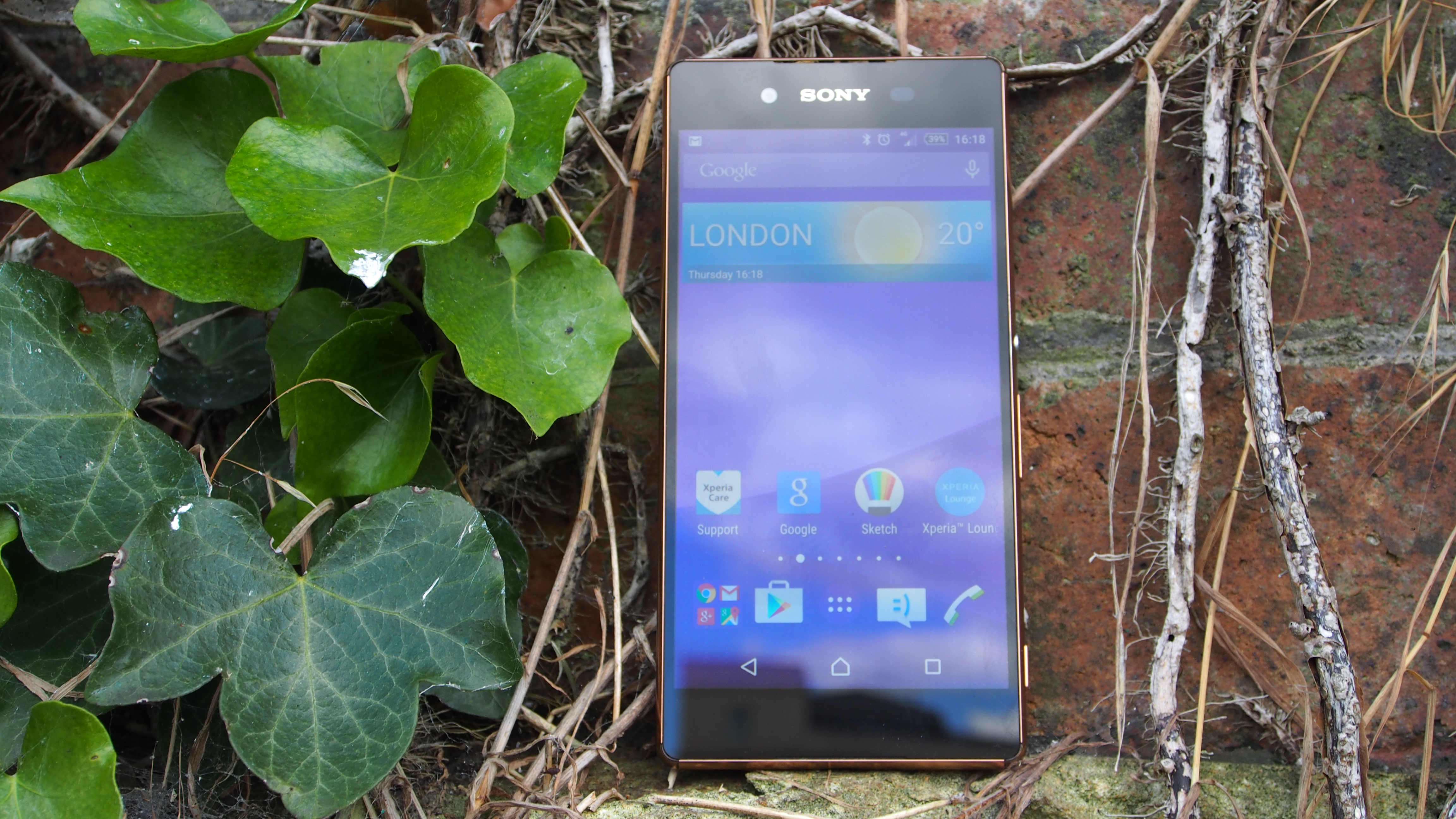Why you can trust TechRadar
Pretty much any recent smartphone can handle the essentials competently and the Sony Xperia Z3+ is no different.
Phone calls come in through the Phone app, which features a few tweaks to the stock Android experience, such as including most used numbers at the top of the screen.
The dial pad is also slightly different, and more in keeping with Sony's theme that runs throughout the interface. Call quality itself is very good, and the handset did a good job getting signal (on the EE network) even in areas where network coverage is patchy.
Text messages have a slightly tweaked app, though this one is closer to the stock Android version. This time round, the newest messages get highlighted with a background picture of the contact who sent the message (if you have one assigned). It's a little touch, but one of the few areas where I actually prefer Sony's aesthetic choice over Google's.
The onscreen keyboard is all right, and the larger screen of the Xperia Z3+ makes hitting the keys reasonably easy and accurate, except I kept hitting '.' instead of space, which.made.sentances.look.like.this. It's rather annoying, and I don't seem to have that problem on other devices, so I'm inclined to blame the Z3+.
It's arguable that browsing the internet is now just as essential to smartphones as the ability to make and receive phone calls, and the Z3+ does well in some respects when it comes to the world wide web.
Chrome is the default browser, and as it is to be expected, offers a decent web experience, with websites displaying well. The 1080p 5.2-inch screen is big enough to read text on comfortably, and the 4G and Wi-Fi connection options allow for quick internet connections no matter if you're indoors or out and about.
However, the web browsing experience is compromised by the excessive heat generated by the Xperia Z3+, and after only a few minutes of browsing image (and gif) heavy websites, the handset became very hot to touch.
Web browsing also has a big impact on battery life, which means you'll want to limit your browsing.
Watching and listening to media is another essential, and the bright and vibrant screen does an excellent job of displaying videos. Music and podcast playback is also very good. Sony has included a feature that identifies when you've got a pair of headphones plugged in and will give recommendations for sound settings so that you can achieve the best audio quality.
Sony's commitment to audio excellence is evident with the support for Hi-Res audio as well as LDAC, which is an improved wireless streaming standard that makes listening to tunes with Bluetooth headphones or speakers much more impressive. It's here that the Z+ really stands out from the competition, and if your smartphone is your primary method of listening to music, then there is a lot to like.
The internal storage of 32GB provides plenty of space for media storage (and puts the stingy 16GB offering of the cheapest iPhone 6 to shame), and you can expand this by a further 128GB with a microSD card.
The built-in speakers do an adequate job of playing music out loud, but they don't quite compare to the impressive BoomSound front-facing speakers of the HTC One M9. You'd be better off getting a pair of external speakers for the best possible sound quality.

Matt is TechRadar's Managing Editor for Core Tech, looking after computing and mobile technology. Having written for a number of publications such as PC Plus, PC Format, T3 and Linux Format, there's no aspect of technology that Matt isn't passionate about, especially computing and PC gaming. He’s personally reviewed and used most of the laptops in our best laptops guide - and since joining TechRadar in 2014, he's reviewed over 250 laptops and computing accessories personally.
